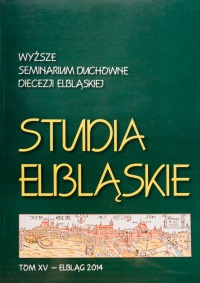„Amoris sagittae et spicula”. Cielesne aspekty mistyki bł. Doroty z Mątów – próba reinterpretacji
„Amoris sagittae et spicula”. The carnal aspects of the mysticism of Dorothy of Montau – a reinterpretation approach
Author(s): Monika Jakubek-RaczkowskaSubject(s): History, Cultural history, Local History / Microhistory, Middle Ages, Theology and Religion
Published by: Wyższe Seminarium Duchowne Diecezji Elbląskiej w Elblągu
Keywords: medieval female mysticism; Dorothy of Montau; somatic symptoms; natural history of desease
Summary/Abstract: The paper is devoted to the physical aspects of asceticism and mystical experience of Prussian female mystic, the blessed Dorothy of Montau, analysed based on the detailed and vivid description of John Marienwerder. It makes an attempt of hypothetic identification of actual character of somatic effects of visions and mystical unions with Christ (sweating, hot flushes, pain) with special consideration of spiritual “stabbings” of heart (and other bodily parts) with arrows and spears of Divine Love and the symptom of enlarged womb. The interpretation by John Marienwerder, rooted in the medieval knowledge of physiology and set in categories of the bridal mysticism, made a considered apology of the Prussian recluse. In effort to reinterpret the somatic symptoms described by medieval theologian, this paper controverts also the attempt of their evaluation and analysis appearing in contemporary scientific literature employing methods of the so called psycho-history. Most likely neither the female psychology nor the religious hysteria were responsible for the carnal symptoms described by John Marienwerder. The mystic throughout all her life heroically struggled with the consequences of scalding she had suffered as a child and of multiple childbirth intertwined with carnal mortifications, however the main cause of her painful experiences most probably was a progressing heart disease. Its increasing untreated symptoms (natural history of illness) can be identified in the writings by John Marienwerder and analysed in the light of contemporary medical knowledge. The holiness of the recluse manifested not only in the sphere of asceticism, renouncement, zealous religious practice and contemplation, but also in transmitting the corporal suffering of somatic origin into the sphere of deep spiritual experience based on the idea of Compassio Christi.
Journal: Studia Elbląskie
- Issue Year: 2014
- Issue No: 15
- Page Range: 165-187
- Page Count: 23
- Language: Polish

